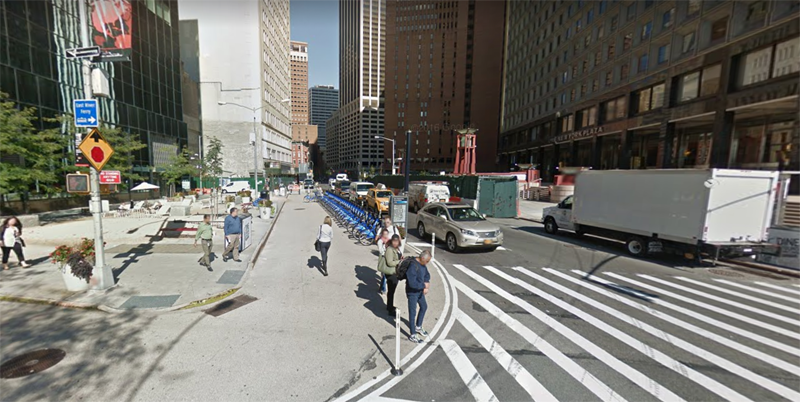Five square miles of Lower Manhattan are slated to become a test track for autonomous vehicle prototypes next year, Governor Cuomo announced yesterday.
Access to NYC streets could be invaluable to General Motors and its subsidiary, Cruise Automation, as they seek to refine their robot car technology in complex urban settings. Instead of rushing headlong into this trial, Cuomo should work with the city to get something in return: precedents that will steer autonomous vehicle operations to achieve public goals.
The decision to test Level 4 AVs -- which mainly operate without human direction but require people in the vehicle to take over if needed -- came as a surprise to city officials. "There was no notification to DOT until [Monday] night on the timing, details or testing area of a pilot," a DOT spokesperson told Gothamist. "In general, the outreach to DOT overall does not even qualify as consulting the agency that oversees 6,000 miles of streets."
It's not a promising start to a process that could have far-reaching consequences for New York and other cities. Assuming the pilot does go forward, this is an important moment to lay down some markers for how autonomous cars should operate on city streets.
Zipcar founder and former CEO Robin Chase has said that if governments don't use their regulatory power wisely, AVs could lead to a "nightmare scenario" of more congestion in cities, crowding out surface transit, biking, and walking. It doesn't have to be that way, but in order for AVs to reduce car ownership and traffic, elected officials like Cuomo and Mayor de Blasio have to intentionally guide the process.
A pilot project in Lower Manhattan presents an obligation to steer policy in at least two respects: public safety, and charging for the use of autonomous vehicles on public streets.
In Lower Manhattan, which is thick with pedestrians and where cars barely fit, a maximum speed of 10 mph is appropriate on many streets. Some locations might call for even lower max speeds -- the city has already mapped out areas where pedestrians should feel like they own the pavement. It's essential that the parameters for safe operation of these vehicles are set by NYC DOT, and not left up to GM and the state government alone.
General Motors and Cruise Automation should also pay for the privilege of using Lower Manhattan streets. In addition to any general access fee for the pilot program, these payments should come in the form of charges per mile driven that vary according to congestion. The point would not be to generate revenue but to set a precedent for charging autonomous vehicles to use scarce road space.
One of the promising aspects of autonomous car technology is that it can facilitate a better system of road pricing than the free-for-all we have now, where giving away street space leads to gridlock, slow bus service, and worse conditions for walking and biking. With a shared fleet of autonomous vehicles that always have a meter running, rates could increase where and when demand is highest, keeping congestion under control. The alternative, where robot cars can drive anywhere for free, is the path to Robin Chase's nightmare scenario.
GM may still be in the testing phase, but it's not too early to start avoiding the nightmare. If Governor Cuomo is going to allow autonomous car prototypes to operate in real city conditions, he needs to insist on a prototype for how these vehicles will pay for access to public streets.





